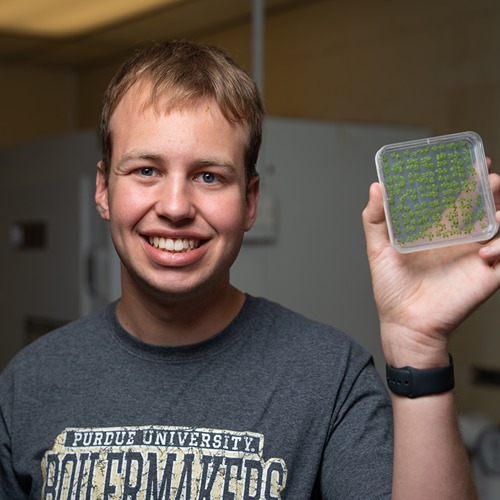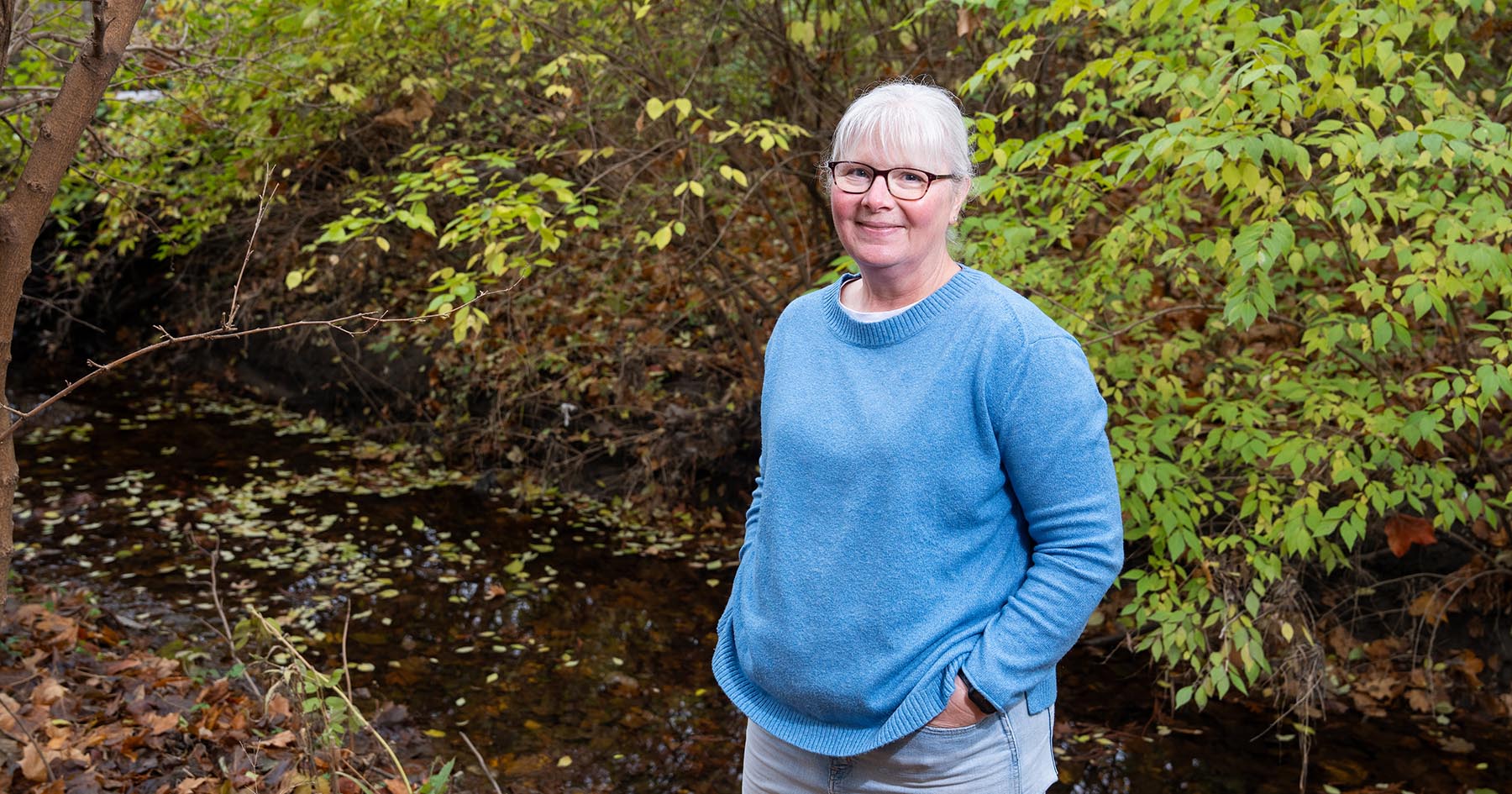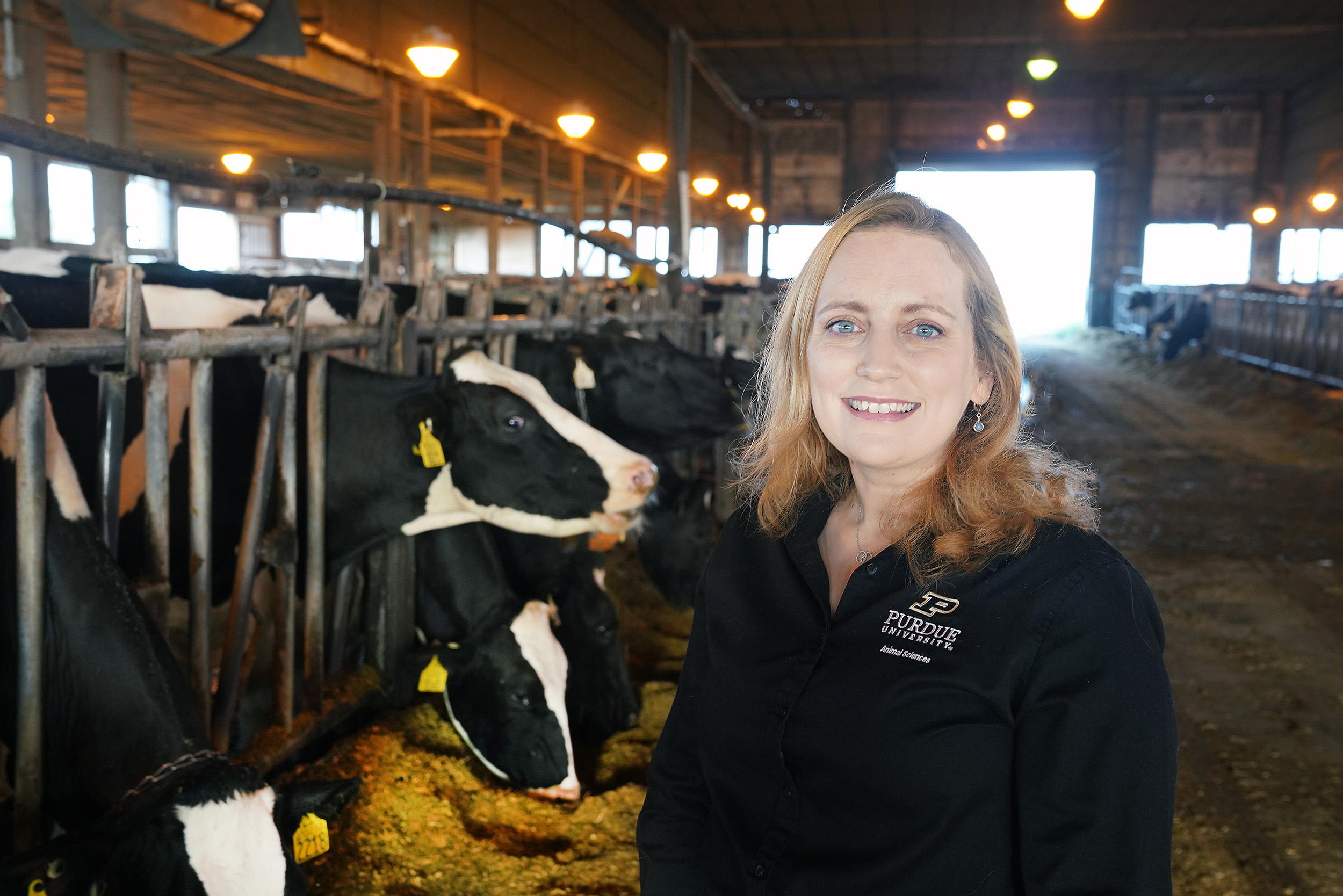Purdue announces new USGS Cooperative Research Unit
A dream half a century in the making is finally a reality. Starting this year, Purdue will be home to the Indiana Cooperative Fish and Wildlife Research Unit, a partnership with the U.S. Geological Survey (USGS), U.S. Fish and Wildlife Service, the Indiana Department of Natural Resources, and the Wildlife Management Institute. It will be the 43rd USGS Cooperative Research Unit (CRU) in the country, and the first in Indiana.
“This is the fulfillment of a dream that spanned literally generations here at Purdue,” says Robert Swihart, professor of Wildlife Ecology in the Department of Forestry and Natural Resources, who will be one of two Purdue liaisons to the program. “And Lowell Baier, an ardent conservationist on behalf of his native Indiana, was the driving force in the creation of the Indiana CRU. His persistence and dogged determination were key.”
The program will fund the hiring of three federal scientists to work alongside faculty in the Department of Forestry and Natural Resources. Unlike most faculty members, though, these scientists will focus almost entirely on research, rather than undergraduate teaching or administration. Their work will focus on fisheries, wildlife, and natural resources in Indiana and beyond. They’ll bring in research money, graduate students, and postdocs, greatly expanding the department’s capacity.
“We look forward to the tremendous opportunity that collaboration with the Indiana CRU will bring to our state and Purdue University,” says Karen Plaut, executive vice president of research at Purdue University. “It will have a direct impact on graduate education as well as research productivity and innovation.”
The researchers will be hired in the coming months. There will be one unit leader and two assistant unit leaders, all PhD level scientists who will teach graduate courses and supervise graduate students and postdocs, in addition to their research.
“[The CRU] builds on existing strengths and leverages the resources and expertise that we have to more effectively address critical questions in fish and wildlife conservation,” Swihart says.
The new unit will fill a hole in the map of CRUs in the country. While there’s a unit in Michigan, there’s nothing in Indiana, Illinois, Ohio, or Kentucky. This leaves empty a part of the country with an abundance of natural resources and many urgent ecological questions.
“Indiana is a state with a diverse set of ecosystems,” Swihart says. “We are at the confluence of the eastern hardwood forest and tallgrass prairies ecosystems; we’ve got the southern Great Lakes, the central hardwood forest region in the south. And Indiana is a huge state in terms of modified landscapes. Agriculture reigns supreme – and rightfully so – but that has implications for wildlife. Urban and suburban expansion has lasting impacts on wildlife...understanding those human-made stressors on ecosystems is important.”
Tomas Höök, Professor of Fisheries and Aquatic Sciences in the Department of Forestry and Natural Resources, Director of Illinois-Indiana Sea Grant, and Swihart’s co-liaison, emphasizes Indiana’s aquatic riches.
“You don’t think of Indiana as an aquatically diverse state, but it is,” he says. “Places like Minnesota are known for lakes, but those lakes go as far south as northern Indiana. Those systems potentially are really important because they experience warmer temperatures than northern lakes, so maybe they can act a bit as canaries in the coal mine for northern lakes.”
Rivers like the Ohio and the Wabash, the latter of which has the largest undammed stretch east of the Mississippi, are also hugely important ecosystems, Höök says, as are the state’s huge reservoirs.
“I’m just excited to get new fisheries and wildlife colleagues and faculty into our department,” he says. “There are so many potential research questions we’d like to ask.”
The increased capacity will allow for more research into any number of critical topics: invasive species, animal disease dynamics, public attitudes towards wildlife conservation. The specifics will depend on the new hires’ areas of expertise; priorities will be decided in coming months.
The CRU program began in 1935 with a unit at Iowa State University. Its mission is to “work with university students to develop the conservation workforce, help decision-makers make complex conservation decisions, and to provide technical assistance between natural resource agencies and universities.” The are now 43 units in 41 states, almost all based out of land-grant universities like Purdue. Nationwide, these CRUs produce an immense amount of research: last year, CRU scientists and students published 416 journal articles in 175 peer-reviewed journals.
As Indiana’s land-grant university, not to mention home to one of the nation’s top Forestry and Natural Resources departments, Purdue was the natural choice to host Indiana’s new CRU.
“What the co-op does in supporting a combination of applied and basic research is really right in Purdue’s wheelhouse,” Höök says.
The recognition of the need for a CRU at Purdue goes back some 50 years, to Durward Allen, a professor in Forestry and Natural Resources and a nationally known figure in wildlife conservation research during the mid-20th century.
“He initiated conversations about the need for a co-op unit in the state,” Swihart says. “I’ve been involved in these conversations over my 30-plus-year career; to finally see it as this point is really gratifying.”
“This is a very wonderful culmination of many years of effort to secure this cooperative research unit for Purdue as a land-grant institution, and more broadly for the state of Indiana, says Jessica Gurevitch, department head of Forestry and Natural Resources.
In addition to the department’s academic and scientific record, Gurevitch emphasizes its extension program, with deep connections to the broader Indiana community. The research done at the CRU stands to benefit all sorts of stakeholders, from fishermen and hunters to farmers and landowners.
There’s a chance to master and facilitate research in this critically valuable area for the environment and to reach out and extend that knowledge to stakeholders throughout the state and beyond as well.
- Jessica Gurevitch, department head of Forestry and Natural Resources





